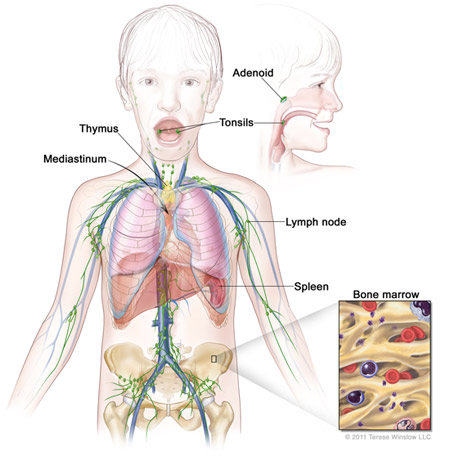Non-Hodgkin Lymphoma (NHL)
Non-Hodgkin lymphoma (NHL) is a general term for cancers of the lymphoid system (also known as lymph or lymphatic system). The lymphoid system is part of the immune system that protects the body from infections. Cells called B and T lymphocytes can be found in lymph glands (nodes), the spleen, the tonsils, adenoids and many other organs and tissues, including the intestinal tract. It is these B and T lymphocyte cells in lymph glands and organs that are abnormal or malignant in NHL.

There are more than a dozen types of NHL, but the following are the most common types seen in children and adolescents:
- Burkitt's lymphoma
- Diffuse large B-cell lymphoma
- Lymphoblastic lymphoma
- Anaplastic large cell lymphoma

About 800 children and adolescents are diagnosed with non-Hodgkin lymphoma in the United States each year; this is approximately 7% of all children's cancers. NHL occurs more frequently with increasing age. Twice as many boys than girls are diagnosed with NHL.
Researchers don't know the cause of most cases of NHL, but do know that B and T lymphocytes are prone to making mistakes or developing variations. These mistakes are known as mutations. Sometimes mutations can lead to new cells multiplying without older cells dying off, as is the normal process. These lymphocytes can grow locally (in lymph nodes or tonsils), or spread to distant sites in the body through the bloodstream or lymph vessels.
Last updated September, 2011
Newly Diagnosed Non-Hodgkin Lymphoma
In Treatment Non-Hodgkin Lymphoma
After Treatment Non-Hodgkin Lymphoma








